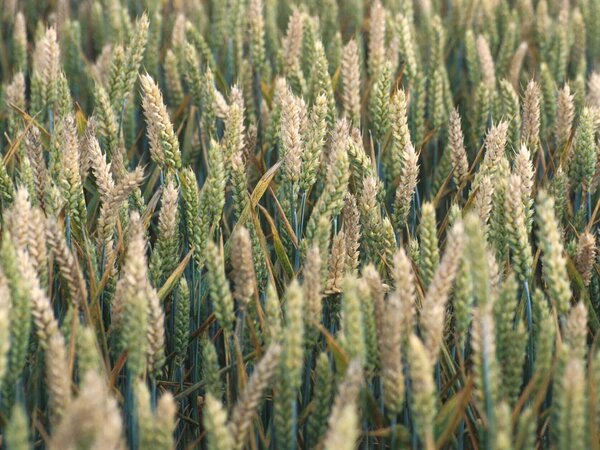Expertise
Soil animals decimate harmful fungi and toxins
Stefan Schrader | 10.06.2022
The aim of our research is to understand and analyse ecologically significant processes that soil animals control through their activity in laboratory and field experiments. With the knowledge gained, we can evaluate the services of soil animals for sustainable soil use.

One advantage of reduced tillage in agriculture is that the organic matter from crop residues remains on the surface. This promotes biological diversity and activity in the soil. However, this is also associated with an increased risk of infection with soil-borne plant pathogenic fungi, for example from the genus Fusarium.
Species of the genus Fusarium are among the most significant harmful fungi worldwide, as they occur frequently and produce fungal toxins (mycotoxins). Due to the potential health risk, the EU has set maximum levels for various mycotoxins in plant raw materials and foodstuffs. If the limits are exceeded, the harvested material may not be traded. One of the most frequently detected mycotoxins in cereals is deoxynivalenol (DON), which belongs to the trichothecenes.
Farmers can prevent harmful fungi with good professional practice. Measures include, for example, avoiding close crop rotations, cultivating varieties that are less susceptible, and combating fungi with fungicides. However, these only partially lead to the desired success. Against this background, we are working with scientists from the Julius Kühn Institute on the question of the extent to which widespread soil animals such as earthworms, fungus-eating springtails and nematodes can naturally prevent the development of Fusarium and contamination with its toxins.
Comparative study on the regulatory potential of soil animals
As part of the European BiodivERsA project SoilMan, soil organisms and the ecosystem services they provide in arable farming were studied in five European regions (France: Brittany; Spain: Andalusia; Romania: Transylvania; Sweden: Uppland; Germany: Lower Saxony). The focus was on maize and cereal cultivation. Among other things, the bioregulatory potential of soil animals as antagonists of economically relevant harmful fungi was quantified in non-turning, i.e. no-till tillage.
With regard to mycotoxins, a significant acceleration of the degradation of various toxins (DON, 3-acetyldeoxynivalenol (3-AcDON), zearalenone (ZEN) and fumonisin B1) by the soil animal species was observed. The reduction rates depend on the toxin in question, the time period, the prevailing temperatures, the soil texture and the key species involved. The earthworm species Lumbricus terrestris showed the greatest overall bioregulatory potential.
Agricultural management that takes into account the needs and habitat requirements of fungivorous soil animals, and in particular the species L. terrestris, can thus lead to a synergy in which the interplay of anthropogenic top-down effects (agricultural management) and natural bottom-up effects (bioregulation by soil fauna) contributes to sustainable agricultural production on healthy and fertile soils in the long term.
We are continuing our investigations with our European partners from six pedoclimatic regions in the Horizon2020 project SoildiverAgro in wheat and potato stands.
Download service
- Thünen Project brief 2021/05Ökologie und Ökonomie ökosystemarer Dienstleistungen durch die Vielfalt von Bodenorganismen in der Landwirtschaft






